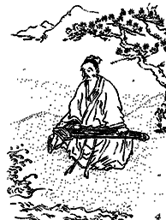How the Ancients Admired Kotohiki Beach

Hi, it's Sandy!
Have you ever wondered what people in the old days thought of the sound of Kotohiki Beach? There's a beautifully written passage from the Edo period that describes it. Let's read it together!

"On Kotohiki Beach, around the area of Taiko-hama, when one drags their feet and grinds the sand,
its voice is 'rōzen' (like resonant jade), a subtle and exquisite sound.
Between a quick pace and a slow walk, one can find the melody.
Truly, it is the stringless koto of heaven and earth."
What high praise! This is a famous passage that beautifully describes the sound of the sand at Kotohiki Beach.
The word "rōzen" used in the text refers to the clear, beautiful sound of jade stones clinking together. People in the past felt that the sound of walking on the beach was like music played by jewels. Isn't it a wonderful expression to call it "the stringless koto of heaven and earth"?
While the Japanese of the past enjoyed this sound as beautiful music, it seems that Westerners often feared it as a mysterious phenomenon or were simply curious about it. Perhaps their ways of relating to nature were a little different.
This document was started in the Edo period by a scholar named Gensho Kobayashi, and it took three generations of his family 80 years to complete! That's incredible!
There are many singing sand beaches around the world, but aside from China, there are almost no places like Kotohiki Beach with such ancient records. That's what makes it so special.
